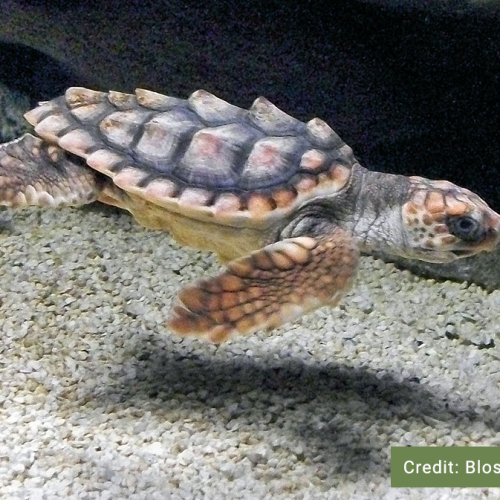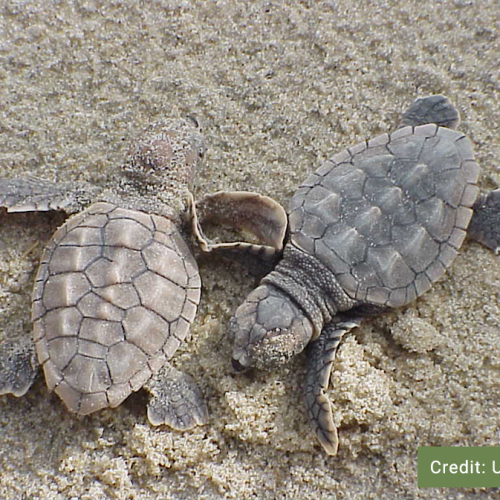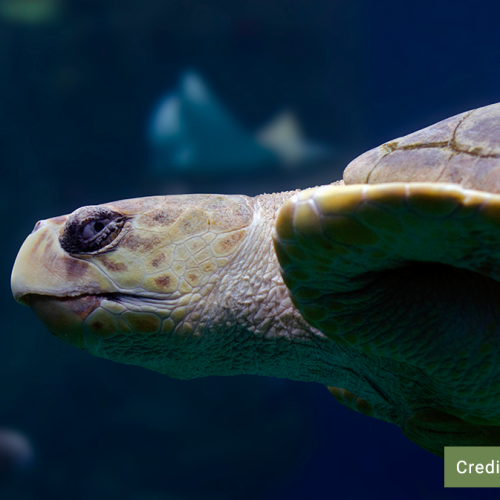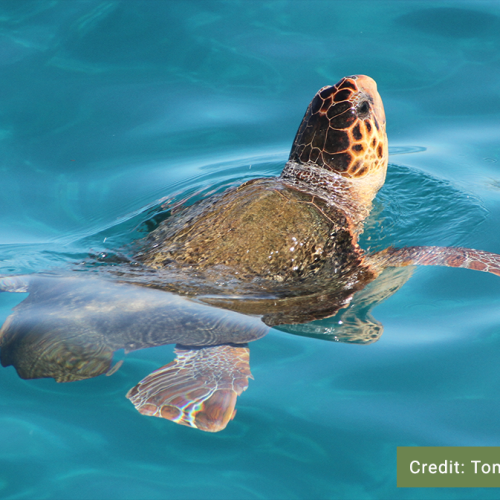Credit: Florida Fish & Wildlife Comission
Loggerhead Sea Turtle
Caretta caretta
Description
Listen to the Indigenous words for “turtle” here!
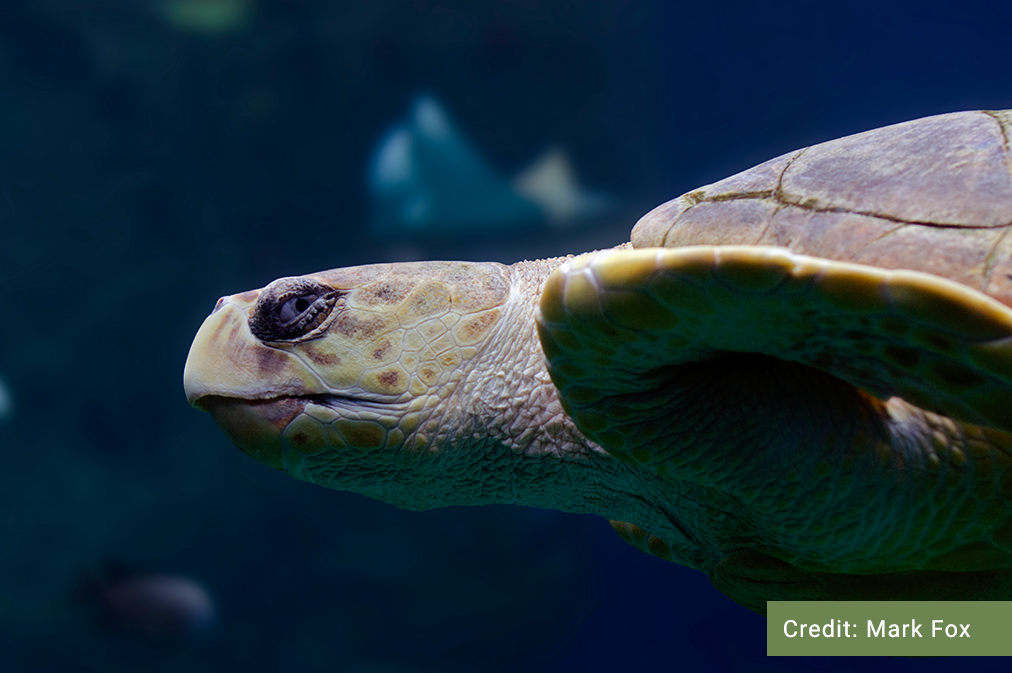
Similar Species
In Canada, the Loggerhead Sea Turtle may be confused with the Pacific Leatherback Sea Turtle, the Green Sea Turtle, or the Olive Ridley Sea Turtle; although all sea turtle species are accidental in Canada and are generally very rare. The Pacific Leatherback Sea Turtle has no scutes on the shell, but is instead leathery and lacks the bright colouration of the Green Sea Turtle. The Green SeaTurtle may be coloured similarly to the Olive Ridley Sea Turtle, but they are generally much larger and have 4 pairs of costal scutes, whereas Olive Ridley Sea Turtles usually have 6 or more.
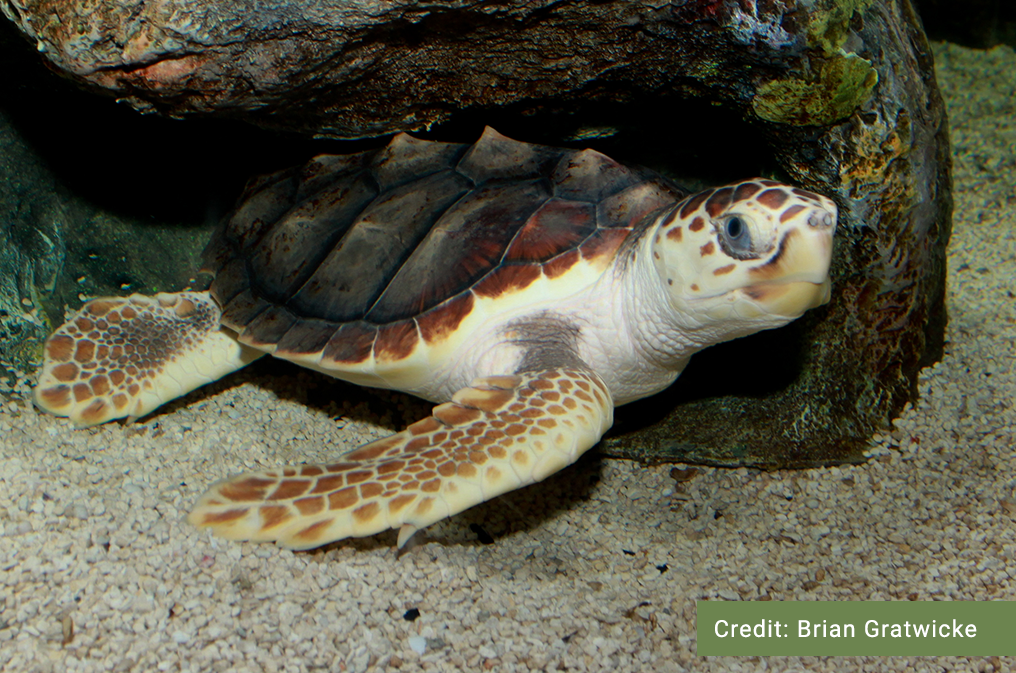
Loggerhead Sea Turtle
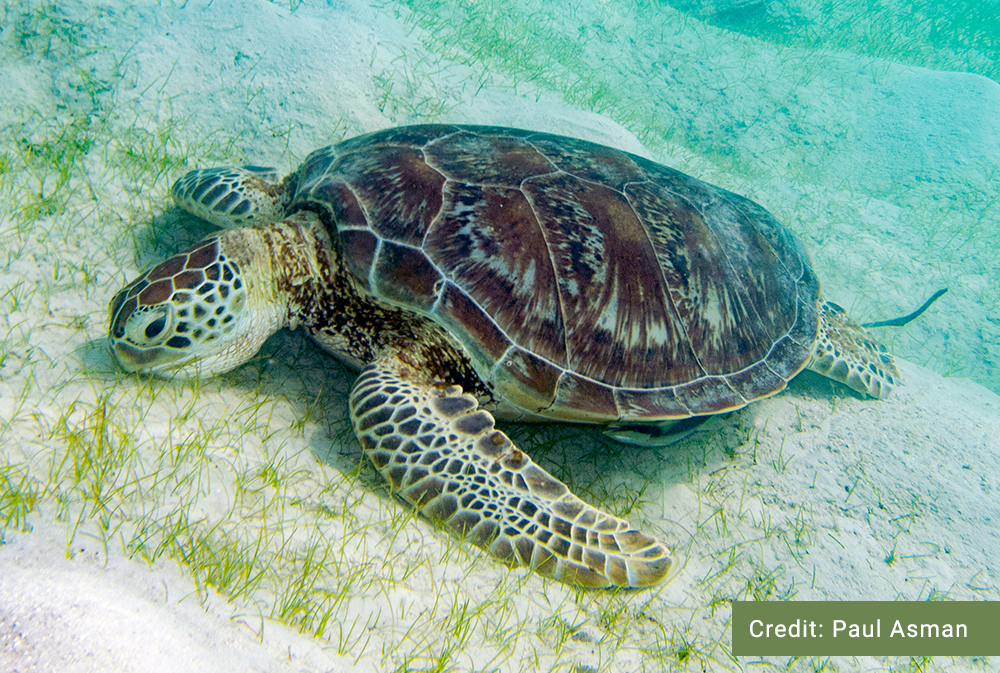
Green Sea Turtle
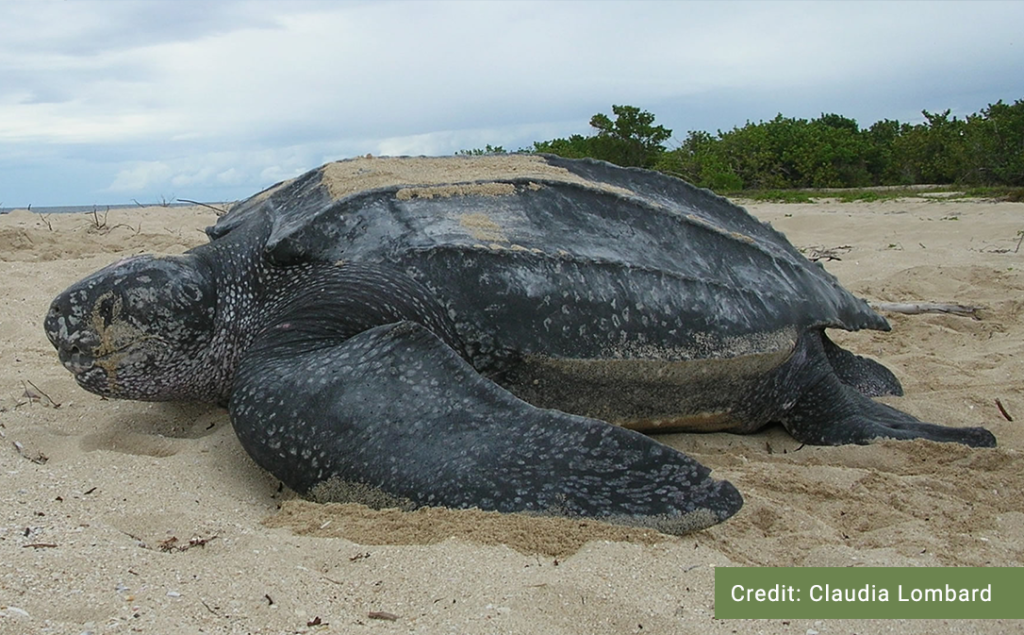
Pacific Leatherback Sea Turtle

Olive Ridley Sea Turtle
Distribution
British Columbia Cetacean and Sea Turtle Sightings Network (BCCSN)
1-866-I SAW ONE (1-866-472-9663)
Habitat

Reproduction
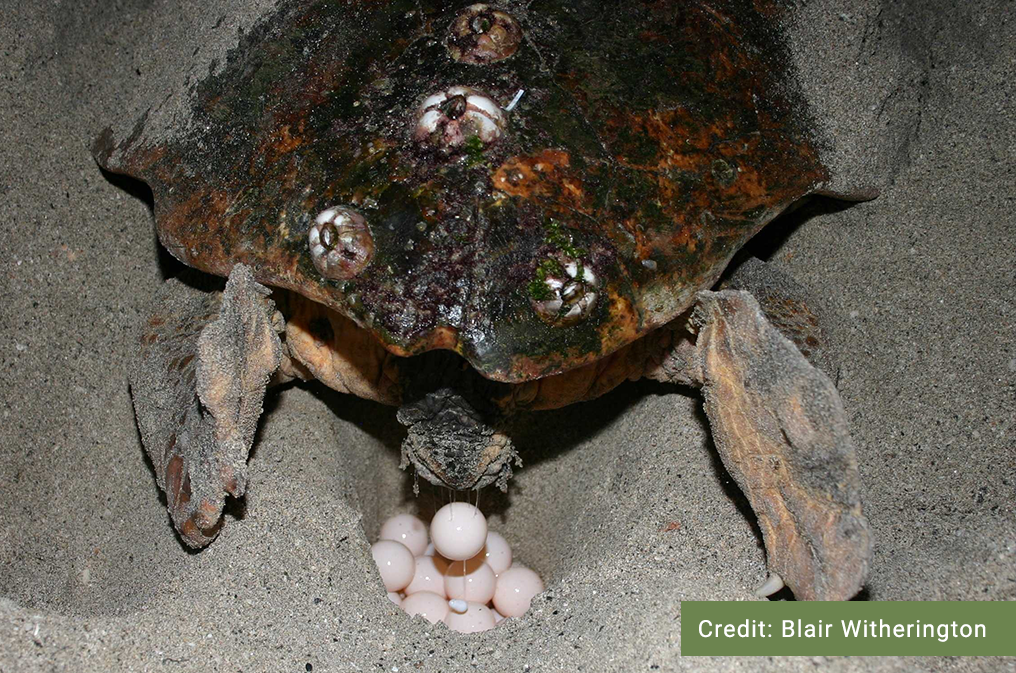
Diet
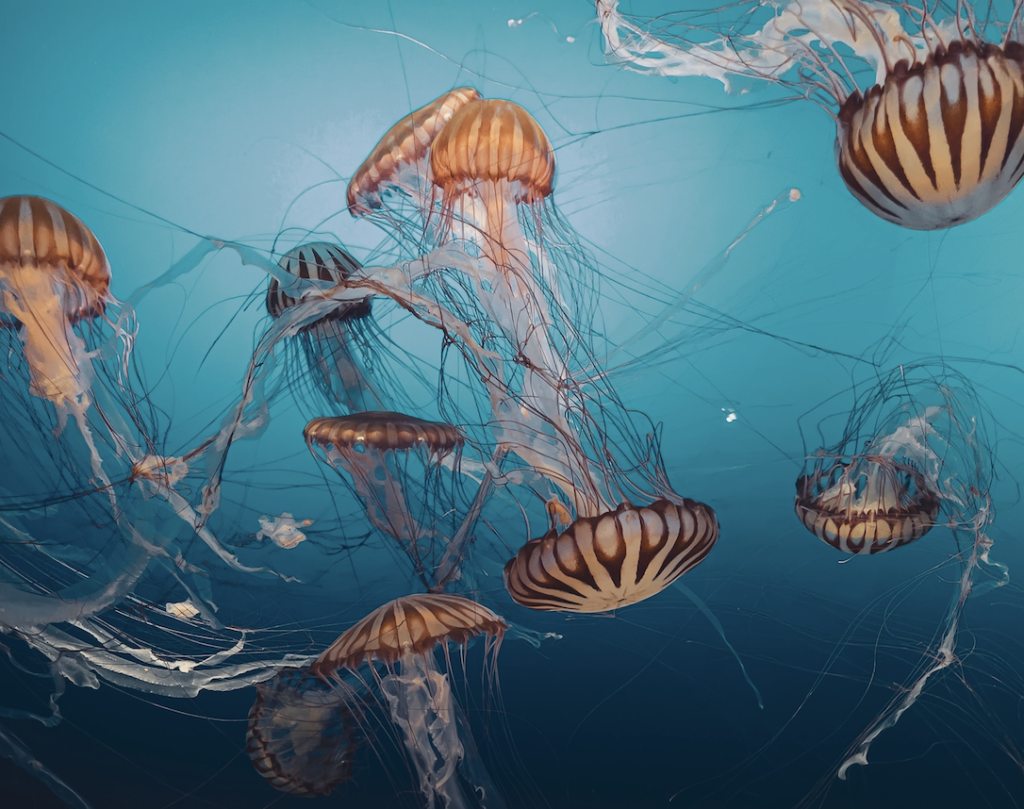
Conservation Status
Global: G3 (2014)
COSEWIC: E
SARA:1-E (2017)
Provincial: SNA (2018)
BC List: Accidental
Learn more about conservation status rankings here
Threats
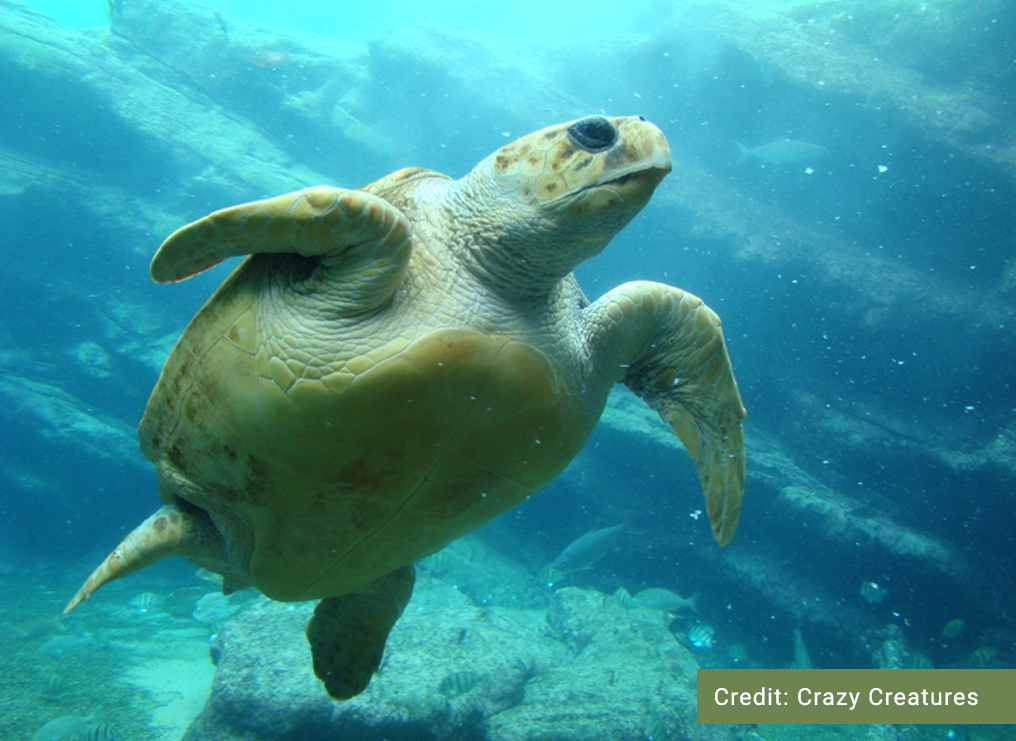
Did You Know?
Fact #1
Fact #2
Species Account Author: Marcus Atkins
COSEWIC. 2010. COSEWIC assessment and status report on the Loggerhead Sea Turtle Caretta caretta in Canada. Committee on the Status of Endangered Wildlife in Canada. Ottawa. viii + 75 pp. (www.sararegistry.gc.ca/status/status_e.cfm).
B.C. Conservation Data Centre. 2003. Species Summary: Caretta caretta. B.C. Minist. of Environment. Available: https://a100.gov.bc.ca/pub/eswp/ (accessed Sep 13, 2021).


